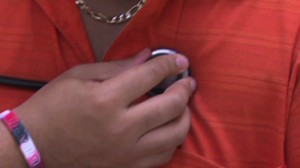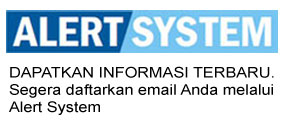Chest pain could mean you need a serious operation to get blood flowing back to your heart. But it’s hard to know who needs such an intervention, especially without evidence of a heart attack.
Scientists reported at the European Society of Cardiology Congress in Munich this week that a super-fast computed tomography (CT) scanner can tell whether an invasive procedure is necessary.
Background
Cardiac CT has become widespread over the past eight or nine years, said Richard George, assistant professor of medicine at the Johns Hopkins University School of Medicine. A big advantage is that it can noninvasively look for blockages of the heart’s arteries. The drawback is that it can’t tell if the blood flow is impeded.
“That’s a very important thing to know about patients who have coronary artery disease,” George said.
In people with chest pain who are not having a heart attack, it’s common to use an invasive test called cardiac catheterization. About 30% of patients who undergo that test don’t end up needing a procedure that opens or bypasses the vessel.
The study
To address this issue, scientists used a technique called CT perfusion. For this test, patients were given a medicine that increases blood flow to the heart and dilates blood vessels.
An international study looked at 381 patients at 16 hospitals. Researchers used a device called a 320-detector CT scanner.
Patients who were referred for cardiac catheterization underwent a coronary CT angiogram and a CT perfusion study. The combination of these two methods allowed scientists to accurately detect blockages by what would be considered clinical standards, George said.
The perfusion study is less expensive than a more invasive test, takes less time, and is safe for patients, George said.
The coronary angiogram has been around for several years. The new part of this study is adding the measuring of blood flow on top of imaging the artery itself.
Who’s eligible?
If a CT angiogram reveals there’s some disease in the coronary arteries, that’s a patient who would be eligible for a CT profusion study. The main ones who benefit are patients complaining of chest pain who have coronary blockage or who had a blockage in the past and have a new complaint.
Drawbacks
Cardiac CT scanning uses radiation, George noted. But this radiation is less than an invasive coronary angiogram.
The scan also requires contrast dye to help doctors see inside the artery. Some people are allergic to this dye, with adverse reactions occurring in about 1 out of 1,000 patients. Those who have kidney problems should also not receive this dye.
The takeaway
Researchers are planning to follow the patients in this study for an additional two to five years to see how predictive the CT method was for predicting events such as heart attacks, heart failure and death. Even though the patients in the study received treatment for their heart problems, the tests may be able to predict who is at higher risk of a subsequent cardiac event.
Also note that this study was presented at a conference but not published in a peer-reviewed journal, although the authors have submitted it to such publications. Several experts with no affiliation to the author read a study before it goes in a peer-reviewed journal.
Sumber: CNN.com









[…] Chest pain could mean you need a serious operation to get blood flowing back to your heart. But it’s hard to know who needs such an intervention, especially without evidence of a heart attack. Selengkapnya […]